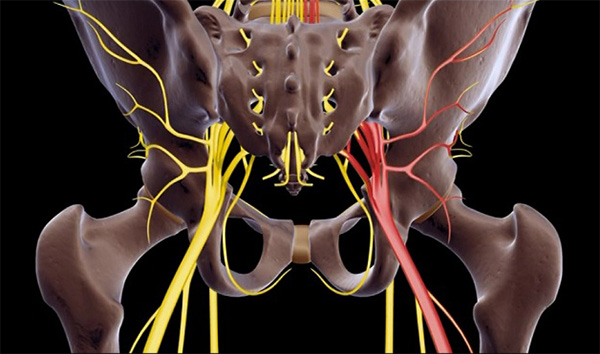Pain in the lumbar region, radiating down to the hips and legs are caused by dysfunction of the sciatic nerve. This condition is called sciatica and is not a disease, but rather a symptom of a disease of the sciatic nerve. This is common among people over 40 years.
The sciatic nerve is the largest in the human body. Formed from the nerve roots exiting the spinal cord in the lumbar zone, extending to the buttocks and legs, down to the ankles. Compressing (bulging or ruptured intervertebral disc) can cause mild or severe pain, tingling or numbness. Generally, sciatica is confused with general back pain.
There are two types of sciatica:
Acute sciatica – can last between 4 and 8 weeks. This type does not require medical treatment and pain can be combated with painkiller drugs, combined with sports and hot and cold compresses.
Chronic sciatica – persist for a longer time. Requiring medical treatment (physiotherapy) which includes sports, heat applications and, in some cases, surgery.
How sciatica appears?
Sciatica is a common symptom of several diseases, the most common being a herniated disc.
The spine is composed of three parts: the vertebrae, discs and nerves. The discs are made of elastic but durable cartilage, and their position between the vertebrae gives them the role of “shock absorber”. In addition, the disks allow the spine to be mobile. Disc’s herniation implies that the disc was moved from its normal position, compressing the sciatic nerve.
Other causes of the occurrence of sciatica are lumbar spinal stenosis, spondylolisthesis, a tumor or infection in the spine, a blow to the spine and, not the least, Cauda Equina syndrome or “ponytail”.
In most cases, however, there are no apparent causes of sciatica so it can be said that any irritation of the sciatic nerve is causing pain.
What are the risk factors?
Age – due to the deterioration of the intervertebral discs once they age, people over 30-40 years are most at risk of sciatica.
Occupation – jobs that involve lifting heavy objects for long periods of time is another risk.
Sedentary lifestyle – people who sit for long periods of time are also in danger.
What are the first signs of sciatica?
The main manifestation of sciatica pain is localized along the sciatic nerve: in the lumbar area, towards buttocks, along the legs, knee (usually only one leg is affected). The intensity of pain varies from mild to severe and may worsen if the person is sitting down for long periods.
Other symptoms: leg numb, sometimes the numbness from the area of the foot is accompanied by pain in another area of the leg, tingling in legs and toes.
Can it be prevented?
In some cases, sciatica cannot be prevented. That’s because the intervertebral disc damage which occurs with aging. However, to mitigate risk, there are some lifestyle changes that can help:
Movement practiced regularly, focusing on strengthening the back and abdominal muscles, and improving back posture.
Particular attention to posture – correcting back position when we sit down, lifting heavy objects correctly (helping us by feet and no by backbone when we rise), choosing a bed mattress and a pillow suitable for our needs and stature.

